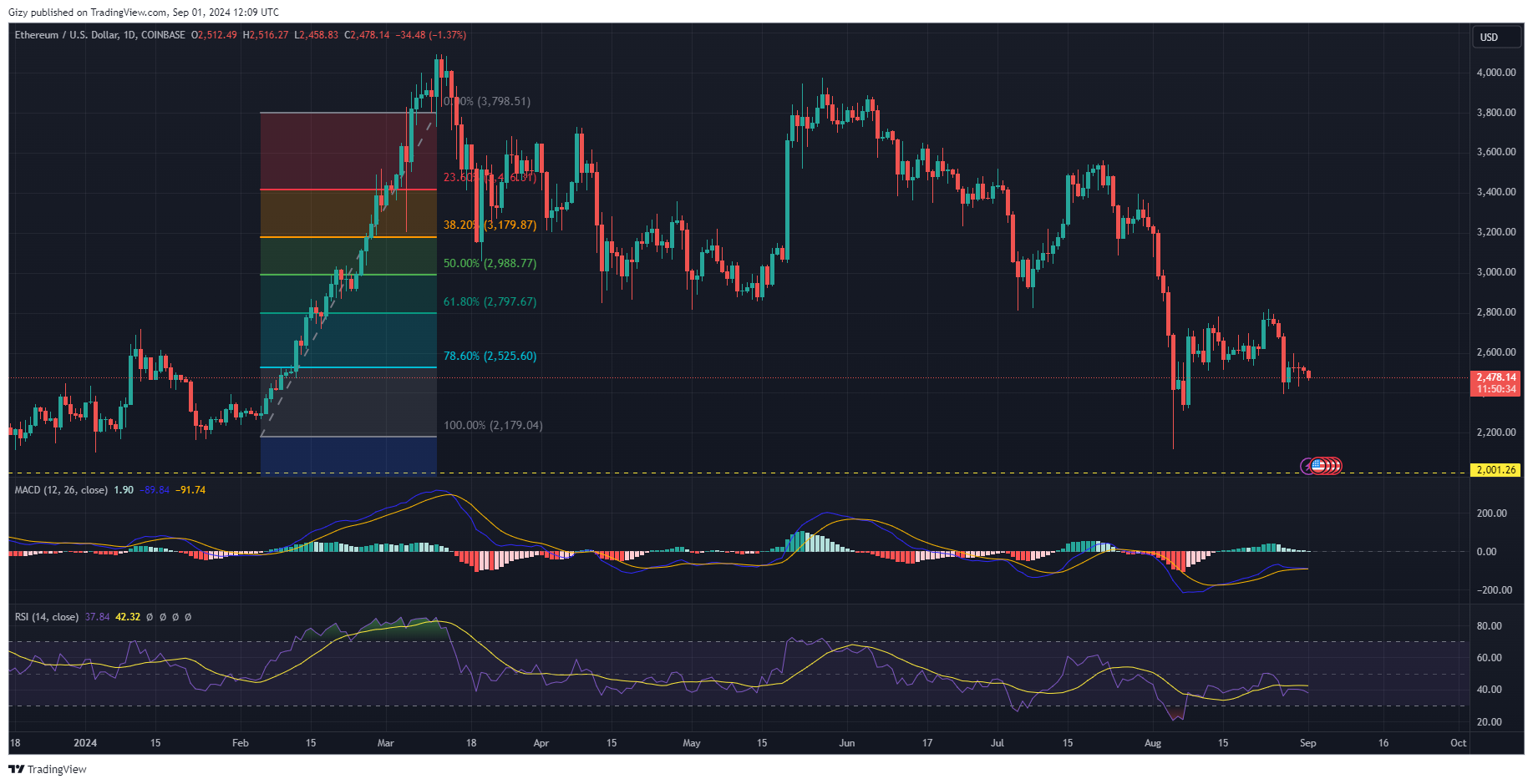Bitcoin is closing August with significant losses after several waves of downtrends. While the bears grin at the selling congestion, the bulls are happy the month is over and are hoping the new thirty-day session will bring more increases. Will it?
What shaped August’s Performance?
Many traders closely monitor key economic indicators such as the CPI, PPI, and jobless claims to assess the risk of the US economy sliding into a recession. When these indicators provide mixed signals, traders often shift their focus to company earnings reports for clearer insights.
Currently, attention is on the upcoming earnings announcements from Nvidia and Crowdstrike, which are expected to provide a more accurate gauge of the economy’s health. Concerns are growing that these reports could be negative, potentially dampening sentiment across both the stock and crypto markets.
There is a mixed sentiment regarding the potential impact of these earnings reports, with some suggesting that either a strong or weak outcome could influence the Federal Reserve’s decision on rate cuts in September. Bitcoin prices have already reacted to the uncertain sentiment emerging from the stock market.
Despite positive results, there remains apprehension about potential shifts in the Fed’s prior stance.
Decline in Network Activity
In addition to fluctuations in traditional assets, Bitcoin has seen a decrease in network activity over the past seven days. This drop in activity suggests a decline in investor interest, following a recent period where Bitcoin’s funding rate on Binance hit its lowest point in three years.
The reduced network activity is largely attributed to decreased investment from the Asian market. The Korea Premium has remained negative for almost a month as Bitcoin continues to see reduced inflows from the region. ETFs could also experience a significant shift in flows, as on-chain data turns bearish shortly after reports of notable inflows.
Interestingly, miners have not played a major role in the recent decline, maintaining a moderate level of selloff.
Derivatives Market
August 27 marked a particularly active day in the derivatives market as the ongoing downtrend persisted. Total liquidations reached $320 million within 24 hours, with long positions bearing the brunt of the losses. Bitcoin traders alone lost over $95 million, with bulls accounting for more than $85 million of the total. One trader, in particular, suffered a $12 million loss amid the downturn.
Since then, funding rates for derivatives have sharply declined, with investors increasingly avoiding these markets. This trend is also reflected in a drop of over 7% in open interest volumes within just 24 hours, a development occurring amidst low overall market volatility.
How will Bitcoin Perform In September?
The first half of September will undoubtedly be filled with significant price declines. The indicator on the one-day chart offers reason to believe this is likely.

Metrics like the Moving Average Convergence Divergence (MACD) suggest further retracement. They showed a negative divergence a few days ago, and the downward trend persists. There’s no sign of recovery yet, as on-chain data remains bearish.
The metrics indicate low funding rates across most key regions, with the Asian market still not resuming its buying activity. Consequently, the Korea Premium remains negative. Additionally, Bitcoin products have seen a slight decline in buying volume as institutional investors have not continued their purchases.
The United States has also turned bearish, with traders pausing their accumulation of the asset. The Coinbase Premium is currently negative.
All metrics point to further declines, with the possibility that Bitcoin could retrace below $55k. However, some bullish events in the ninth month may improve the price trajectory.
This may see BTC surge during the second half of September. It may flip $60k, $62k and look to a peak or close around $63k or $65k.

